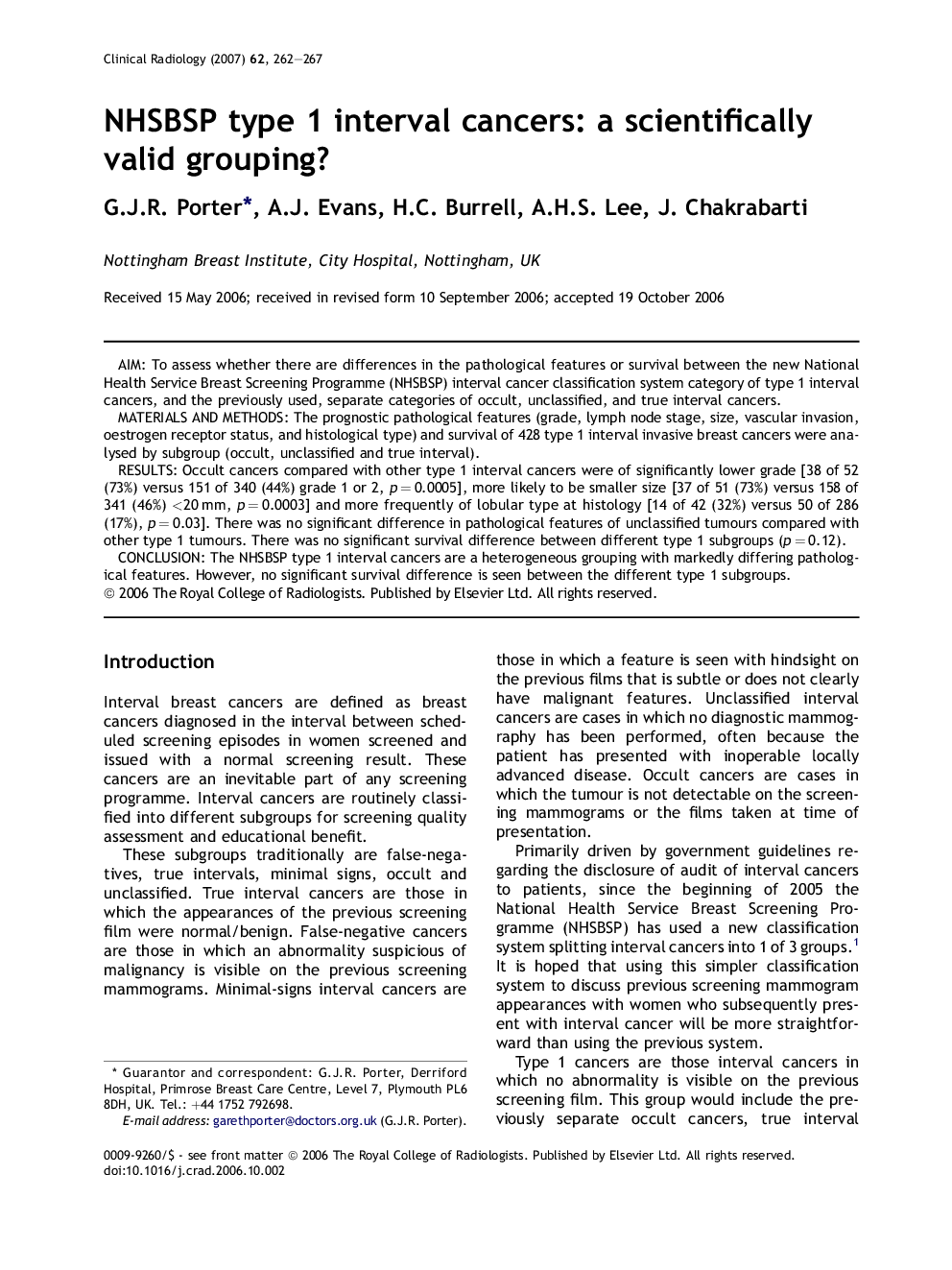| Article ID | Journal | Published Year | Pages | File Type |
|---|---|---|---|---|
| 3983532 | Clinical Radiology | 2007 | 6 Pages |
AimTo assess whether there are differences in the pathological features or survival between the new National Health Service Breast Screening Programme (NHSBSP) interval cancer classification system category of type 1 interval cancers, and the previously used, separate categories of occult, unclassified, and true interval cancers.Materials and methodsThe prognostic pathological features (grade, lymph node stage, size, vascular invasion, oestrogen receptor status, and histological type) and survival of 428 type 1 interval invasive breast cancers were analysed by subgroup (occult, unclassified and true interval).ResultsOccult cancers compared with other type 1 interval cancers were of significantly lower grade [38 of 52 (73%) versus 151 of 340 (44%) grade 1 or 2, p = 0.0005], more likely to be smaller size [37 of 51 (73%) versus 158 of 341 (46%) <20 mm, p = 0.0003] and more frequently of lobular type at histology [14 of 42 (32%) versus 50 of 286 (17%), p = 0.03]. There was no significant difference in pathological features of unclassified tumours compared with other type 1 tumours. There was no significant survival difference between different type 1 subgroups (p = 0.12).ConclusionThe NHSBSP type 1 interval cancers are a heterogeneous grouping with markedly differing pathological features. However, no significant survival difference is seen between the different type 1 subgroups.
